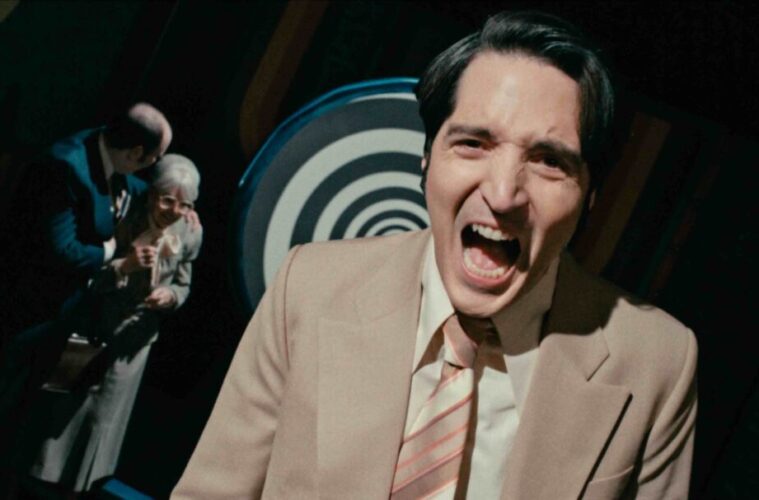 The success of a horror film depends less on its story than on its execution. Even the descriptor “found footage” is sometimes misleading; you may think you know what you’re getting into, but if the handling is novel enough, a movie can still surprise you. Late Night with the Devil is a casebook example of how clever execution can triumph over a routine concept and predictable development, taking a sow’s ear and turning it into a sow’s ear purse.
The success of a horror film depends less on its story than on its execution. Even the descriptor “found footage” is sometimes misleading; you may think you know what you’re getting into, but if the handling is novel enough, a movie can still surprise you. Late Night with the Devil is a casebook example of how clever execution can triumph over a routine concept and predictable development, taking a sow’s ear and turning it into a sow’s ear purse.
The content of this soon-to-be cult classic is framed as a “lost” tape containing the ill-fated Halloween broadcast of a syndicated late night talk show called Night Owls. The year is 1977, and the once popular series is plummeting in the Nielsen ratings while its garrulous host, Jack Delroy (David Dastmalchian), is still recovering from the loss of his wife to cancer. Hoping to stage a comeback, Jack lines up a series of controversial guests, among whom is a spiritualist (Fayssal Bazzi) who senses a malign presence in the studio. Those ill feelings are confirmed with the last guests of the evening, which include a parapsychologist (Laura Gordon) and a 12-year-old girl (Ingrid Torelli), the sole survivor of a cabal of Satanists. Slowly and inexorably, darker revelations are brought to light.
The film is set, shrewdly, at the dawning of the Age of Aquarius, when an interest in drugs and alternative religions coincided with a resurgence of occult activity. The interview with the little girl resembles the celebrated—and later discredited—televised séance conducted by Bishop Pike with the medium Arthur Ford, and one of the show’s guests is a hypnotist (Ian Bliss) reminiscent of paranormal investigator Hans Holzer. Dastmalchian, equipped with a beige suit and long sideburns, gives a game performance as the spiritually vulnerable host, and his joshing around with announcer and sidekick Gus (Rhys Auteri) has the ring of authenticity.
Found footage horror has lost its novelty in the years since the Blair Witch roamed the woods of New England. What lifts Late Night with the Devil above others in its class is its total commitment to achieving the look and feel of late 1970s TV. The Australian writing-directing team Colin and Cameron Cairnes admit to being inspired by The Don Lane Show — “Australia’s answer to The Tonight Show with Johnny Carson,” according to the filmmakers — whose eponymous host betrayed an interest in the supernatural. The film cuts adroitly between black-and-white photography for the scenes of backstage drama and richly textured color that simulates the videotape recording of the live broadcast. The intentionally flat lighting and gliding camera movements complete the illusion of an actual broadcast while the tongue-in-cheek script delivers some well-earned zingers. (“Ladies and gentlemen, please stay tuned for a live television first as we attempt to commune with the Devil. But not before a word from our sponsors.”)
If Late Night with the Devil doesn’t quite stick the landing, it’s because all of its energy has been channeled into achieving the verisimilitude of its mise-en-scene. The story, to put it bluntly, is pretty standard stuff—a Mephistophelian tale that resembles Rosemary’s Baby by way of The King of Comedy—but the conviction with which it is told makes it a treat for horror aficionados. There is even an interesting, elusive conservatism to its moral message that if you mess with the Devil, the Devil is going to mess with you.
Advertising disclosure: We may receive compensation for some of the links in our stories. Thank you for supporting LA Weekly and our advertisers.

